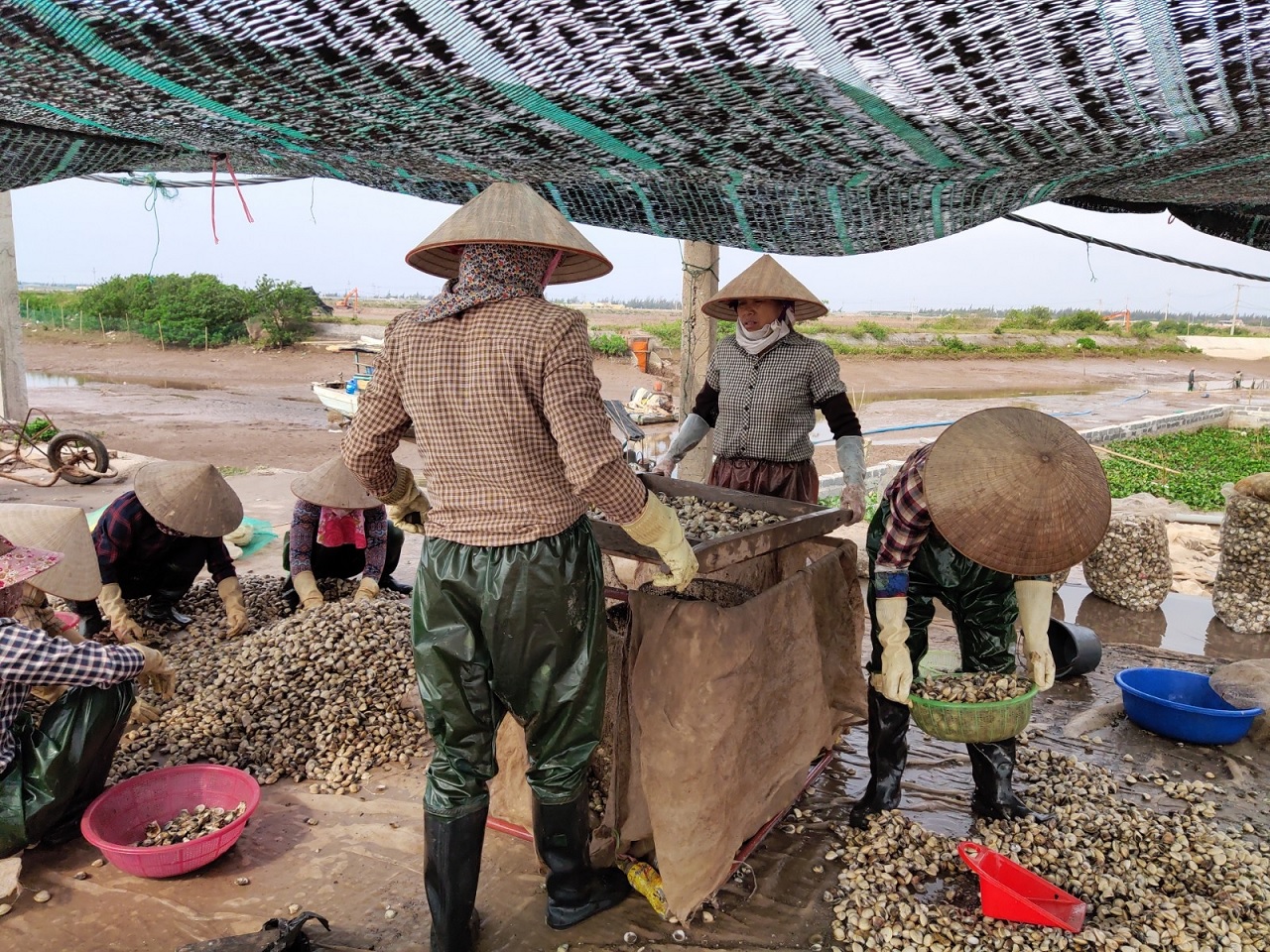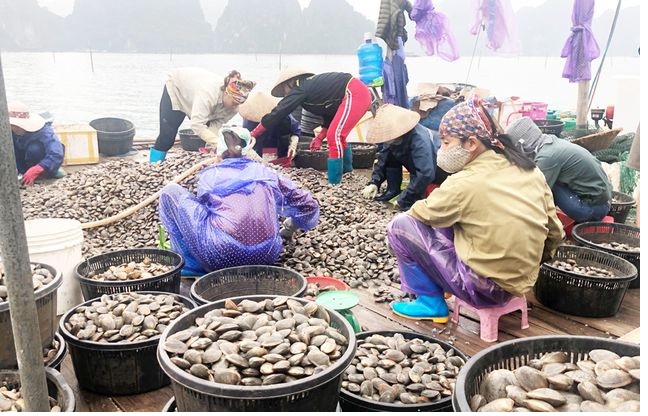(seafood.vasep.com.vn) Accounting for nearly 50% of the national clam production, Thai Binh province is calling for investment in a project of a clam processing and processing factory with a capacity of 70,000 tons/year.
Since 2013, Thai Binh Provincial People's Committee has put a clam processing factory with a capacity of 70,000 tons/year into the list of key projects calling for investment in the province with many preferential policies. In the period of 2021 - 2025, Thai Binh province will continue to include the project in the list of priority projects to attract investment.
According to the decision, the project with a total investment of 50 million USD or more is expected to be located in industrial zones and clusters in Tien Hai area - the place with the largest intertidal clam farming area in Thai Binh province.
The purpose of the project is to invest in building construction works and install modern machinery and equipment for preliminary processing and processing of clams for export, meeting the standards of the US and EU markets.
If the project comes into practice, the export clam processing and preliminary processing factory will purchase and process clam products from 4 provinces of Thai Binh, Nam Dinh, Hai Phong and Ninh Binh to meet the standards of the US and EU markets. At the same time, the province will increase the export value of key seafood products in the coming time.
To encourage investment, Thai Binh province applies many preferential policies on corporate income tax of 10-20% for 10-15 years; tax exemption for 2-4 years, 50% reduction of payable tax for the next 4-9 years; exemption from land rent and water surface rent during the period of basic construction within 3 years.

Clam culture in tidal flats is the potential and strength of Thai Binh province
Clam culture in tidal flats is the potential and strength of Thai Binh province. In recent years, clam farming area, production and value have increased significantly. Each year, the production of farmed clams in Thai Binh reaches more than 100 thousand tons and is the leading locality in the country and accounts for 44% of the national clam production. But currently, Thai Binh has only 1 export clam processing company, which is Thai Binh Shellfish. The source of raw materials is purchased from the local market and then exported to the EU, Japan market .
According to the leader of Thai Binh Shellfish, clams are very heavy while the price is cheap. If it is only used for domestic consumption, businesses will suffer losses. Clams production for export is the sustainable direction, bringing high added value to farmed clam products.
With a coastline of more than 54 km along with many estuary systems flowing into the sea, Thai Binh has created a tidal flat area with many sources of alluvium, so it is very suitable for clam farming.
According to the statistics of Thai Binh Provincial Department of Statistics, in 2005, the province's clam farming area was only 850 hectares, yielding 11.16 tons/ha, total production reaching 9,150 tons. After 5 years (2010), the clam farming area has increased to 1,089ha, yield 27.66 tons/ha, output over 30 thousand tons.
According to the Fisheries Sub-department , Department of Agriculture and Rural Development of Thai Binh, the province currently has nearly 3,200 hectares of intertidal clam farming area, of which 2,500 hectares are for commercial clam farming.

The province's commercial clam production in 2022 reached 122,500 tons
The province's commercial clam production in 2022 reached 122,500 tons, accounting for 67.36% of the total aquaculture production. The value reached over VND 2,400 billion, an increase of VND 321.28 billion compared to 2021, accounting for 58.59% of the value of aquaculture. Of which, about 10% of commercial clams are officially exported, 45% are consumed domestically, and the rest is exported through unofficial channels.
Clam households believe that clam is an easy species to raise as it suffers less diseases, has high demand on market and brings high profit. On average, 1 ha of commercial clams generates an income of more than 300 million VND, while breed clams generate revenue from 800 to 850 million VND/ha.
However, the current clam production has not yet made full use of the potential. There are still many inadequacies such as not having a master plan, method, rental time , unified water surface fees, etc. Infrastructure is mainly invested by farmers, without support from the State. Many clam farming households do not have experience and techniques, so when facing adverse weather, clams die in large numbers, causing economic and environmental losses.
Nevertheless, Thai Binh agricultural industry still identifies clam farming as a strategic priority. To create commodity products with high economic value, clam production must be based on the planned development, investment and management of the State.
Accordingly, the People's Committee of Thai Binh province has a plan to orient the planning area for clam farming in the intertidal zone to 2030 with an area of about 14,000 ha, including 62 ha of clam seed nursery and 1338 ha of commercial clam culture (concentrated in Thuy Truong, Thuy Xuan and Thai Do, Thai Thuy district).
Compiled by Thuy Linh